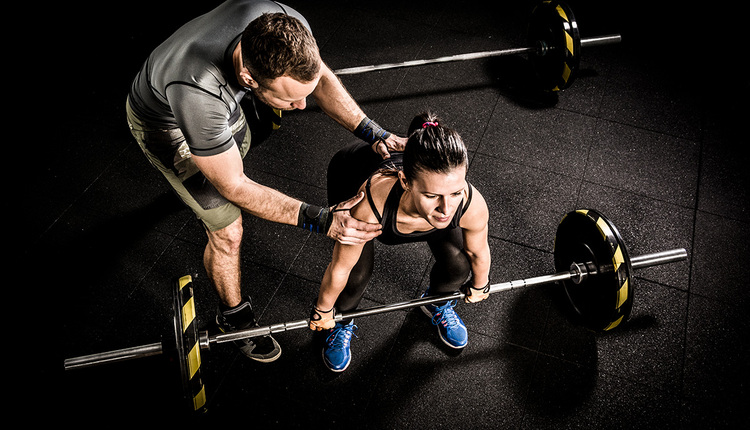
Before discussing the qualities of a good personal trainer, we must first define what it means to be a fitness professional. Being a fitness professional means you’re in the business of relationships; you’re not going to get very far as a personal trainer unless people like being around you, you are relatable, communicate well, and they enjoy the environment and experience you provide. However, just having a relatable personality is not simply what makes for a good personal trainer. It’s not just about how you motivate people; it’s also about what you’re motivating them to do in the first place. This is where the technical aspect of exercise prescription plays a critical role. The technical side of being a fitness professional seems to be the most misunderstood and under-recognized.
A quality personal trainer is an exercise prescription expert
What makes for a good fitness professional will not simply be determined by the organization(s) one is certified by, using a formulized assessment or screening procedure, an intricate knowledge of anatomy, a fanaticism about certain types of exercises, or because of some allegiance to a given training method. Put simply, from the technical side of the profession, a fitness professional is (supposed to be) an exercise prescription expert. Let’s unpack this a bit.
Many people, including many fitness professionals, think that simply knowing a wide variety of exercise variations and how to properly perform/coach them is what makes for a great personal trainer. Those elements are certainly part of the job, but if that is all you as a fitness professional bring to the table, there’s nothing that separates you from the everyday exercise enthusiast who has memorized how to perform a variety of exercises because they’ve spent a great deal of time watching exercise videos online and reading exercise articles, magazines and books. You must possess more expertise if you want to provide real value beyond the advice of an experienced exercise enthusiast.
Put simply, being an exercise prescription expert involves having expertise in:
- The individualization of exercises
- The application and modification of exercises
- The organization and prioritization of exercises
In other words, what separates a great trainer from a not-so-great one, or a great trainer from an exercise enthusiast is:
- Knowing what exercises not to do based on one’s individual ability, physiological framework, medical profile, etc.
- Knowing how to utilize, prioritize and organize the exercises used, (workout structure and program design) based on creating a training stimulus to maximize the specific adaption(s) one is looking to achieve.
The ability to do these things does not come from following fitness trends or memorizing training models from a given organization. It comes from having expertise in analyzing exercises based on the universal principles of training (e.g., specificity, overload, etc.) and biomechanics.
A quality personal trainer is an exercise analyzer
Many trainers and coaches will look at a training program and say it’s ‘good’ or ‘bad’ simply because it does or does not use certain exercises or fit into the given training model they are biased toward; clearly demonstrating that they are putting training methods before training principles. This is the view of the exercise memorizer.
On the other hand, the exercise analyzer holds no such allegiance to a given training method or a fanaticism about certain types of exercises (barbell exercises, kettlebell exercises, stability ball exercises, etc.). When you have a grasp of universal training principles, you have a clear understanding that 1) certain training methods are best for certain goals, and not one method is best for all goals, and, 2) unless you’re competing in a weightlifting-oriented sport, there is no particular exercise that any athlete or gym-goer must do in order to improve. There are only training principles (e.g., individuality, specificity, progressive overload, etc.) that must be adhered to, and there's a wide variety of exercise applications and variations that allow athletes and fitness enthusiasts to adhere to principles in order to achieve their goals.
The exercise memorizer tries to fit individuals to exercises and into their own training methods. On the other hand, the exercise analyzer fits exercises to individuals and understands that the principle of specificity dictates that your goal ultimately determines the exercises that need to be part of your training. This is because the exercise memorizer is caught up with what an “expert” or athlete says and does with certain exercises, whereas the exercise analyzer understands the reality that resistance exercise is just a way to put force across tissues, across joints. That's it! When you understand this, you quickly see that no particular exercise has magical powers because barbells, dumbbells, cables, machines and bands are all just different tools that allow us to apply force across joints.
In short, a great trainer is very bad at fanaticizing about certain exercises, and really good at analyzing all exercises. Possessing a high level of exercise prescription expertise is not determined by memorizing a bunch of exercises or following a specific training model; it is determined by how well you utilize the universal principles. This is because, when it comes to good workout/program design, we don't go from methods down, we go from principles up.
Fitness trends will come and go like clothing styles, but a great trainer today will have the same foundational qualities as a great trainer will have 10, 20, 50 and 100+ years from now because the universal principles of training and biomechanics never go out-of-date.






















